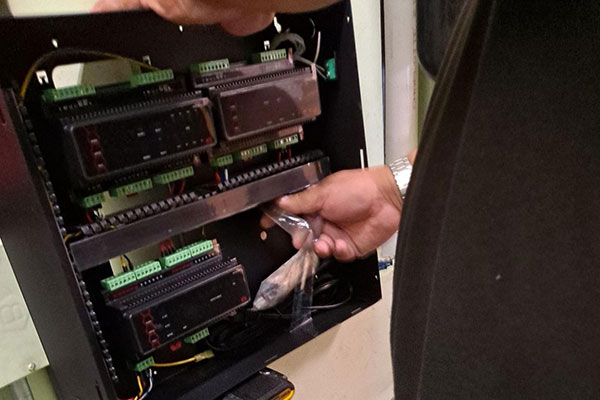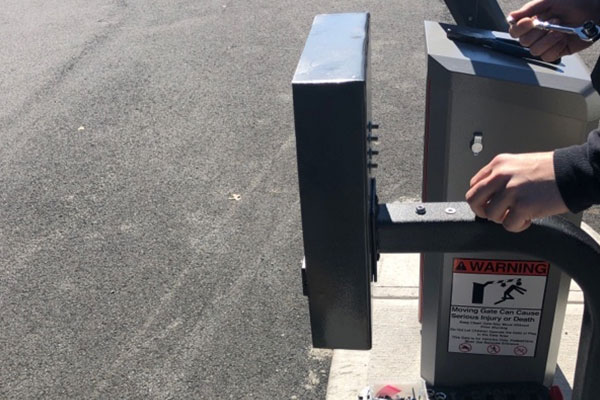Video MGMT System
 Access Control
Access Control
Voice & Data Wiring
 Burglar Alarm
Burglar Alarm
 Fire Alarm
Fire Alarm
Video MGMT System
Voice & Data Wiring
THOUGHT CENTER > Blog > Access Controls
August 30, 2023
Too busy to read? Here’s a summary:

Access control systems unlock doors electronically to grant access to individuals with proper authorization while denying access to all others.
These entry management tools have become integral to efficient commercial-grade security solutions, but they’re often plagued by cable wiring errors, especially when installed by non-professionals.
Every access control system demands a specific type of cable. Ensure you follow manufacturer recommendations for the type and quality of the cables used. If you use the wrong kind, you’re likely to run into operational issues.
Cluttered wires are not just an eyesore; they hinder system performance. Organize your wires neatly with cable management tools to ensure system efficiency.
Every cable type has a maximum distance at which it can effectively transmit data. Exceeding these distances can result in signal loss and poor performance.
In other words, follow the cable manufacturer’s distance recommendations to maintain system functionality.
Installation is the perfect time to test your cables. It saves time and catches issues early on.
Use testing tools like a multimeter or a cable tester to verify cable functionality during the setup phase.
Grounding in access control systems involves connecting the system to the ground to prevent electrical surges that can damage the equipment.
Neglecting grounding can be a costly error, but a professional installer will make sure your systems are appropriately grounded.

While it may seem tempting to install an access control system yourself, professional installation has significant advantages.
Professionals come armed with a wealth of knowledge and experience. They understand the nuances of different systems and have the expertise to handle unexpected situations.
Handing over the task of installing and configuring your access control system to professionals saves you time and effort. It allows you to focus on your primary responsibilities without the worry of installation mishaps.
Professional installers often provide ongoing support and maintenance. It's a convenience that ensures your system remains up-to-date and functional.

Installing an access control system is a complex task with a lot of potential for error, but the Mammoth Security crew has the experience and know-how to avoid installation mishaps and make sure your system is properly tested and functioning.
If you’re interested in upgrading or installing an access control system, be sure to reach out to our friendly team at Mammoth Security.
Just fill out the simple form below, and we’ll contact you to set up a 100% free, zero-obligation site survey and security consultation.
NOT COMPLETELY SURE?
860-748-4292Cable wiring mistakes can involve using incorrect cable types, poor cable management, ignoring cable distance limitations, not testing cables during installation, and neglecting proper grounding. Avoiding these can ensure better performance and longevity of your access control system.
Professional installation avoids common cable voice and data wiring mistakes by leveraging the expertise and experience of professionals. For example, the Mammoth Security crew understands the specific requirements of different systems and adheres strictly to installation guidelines, including correct cable use, cable labeling and management, testing, and grounding.
Effective cable management is crucial for access control systems because it ensures smooth operation, reduces the chances of system downtime, and makes future maintenance and system upgrades easier.
Testing cables during the installation of access control systems involves using tools like a multimeter or a cable tester to verify cable functionality. This step helps detect any potential issues early, ensuring the system works efficiently post-installation.